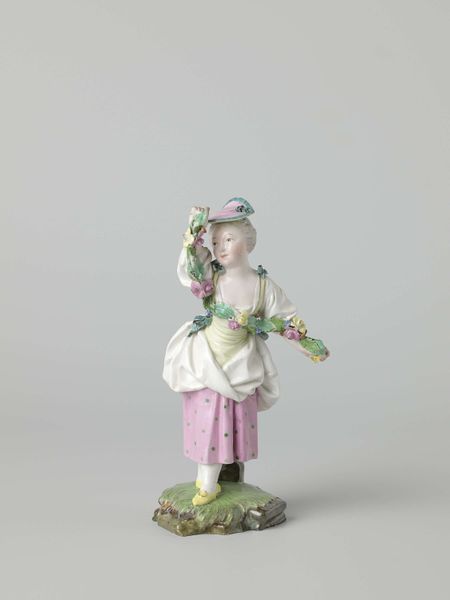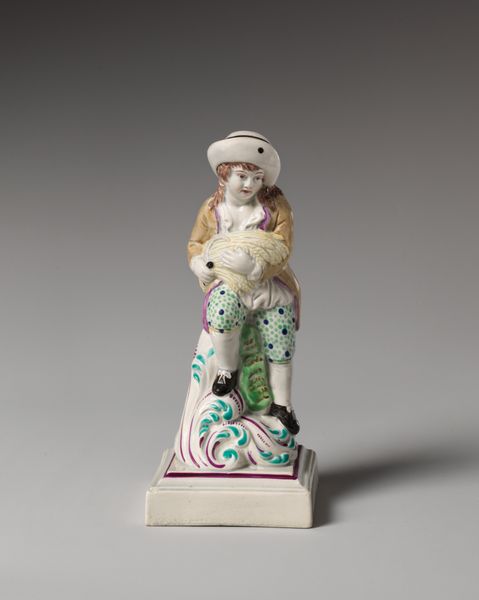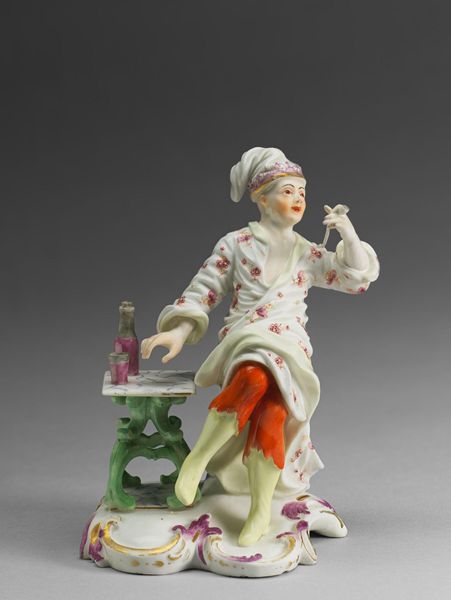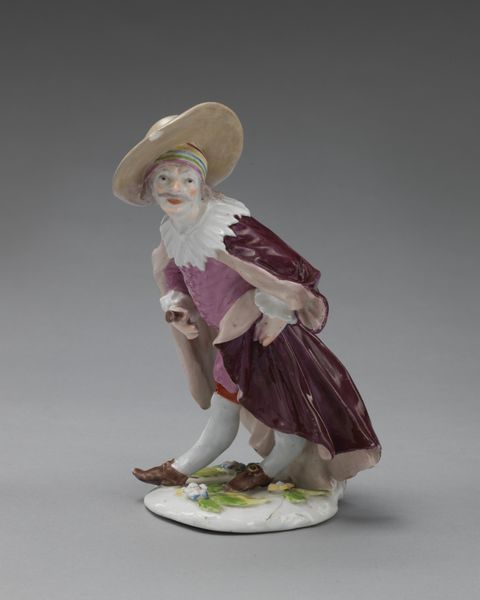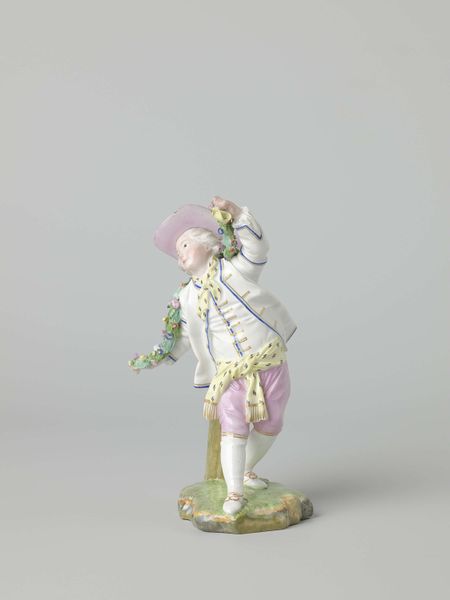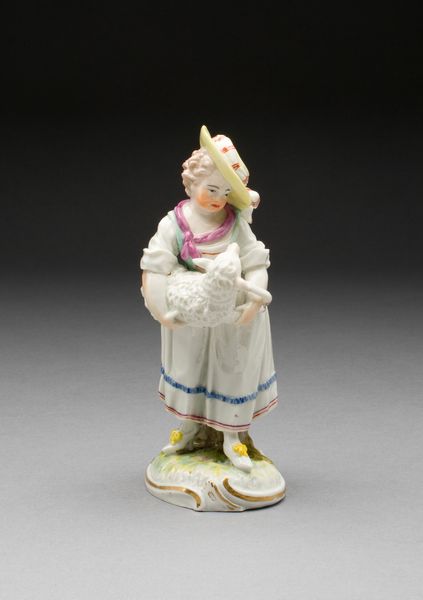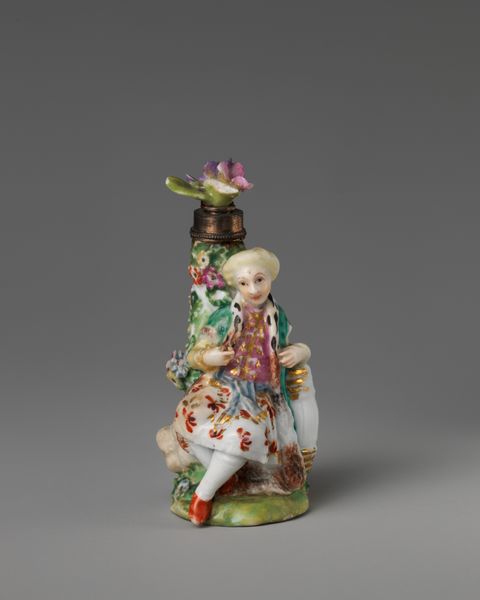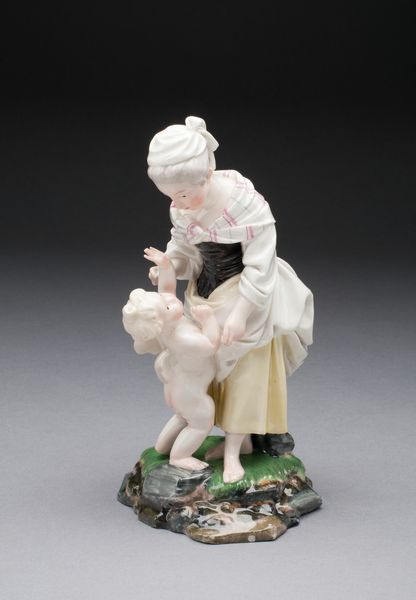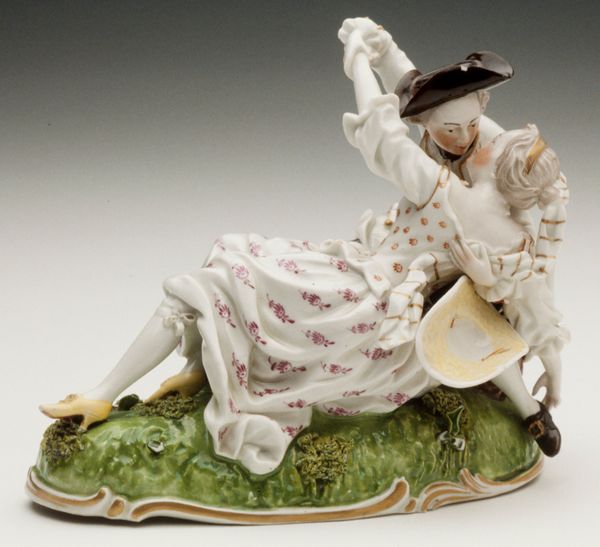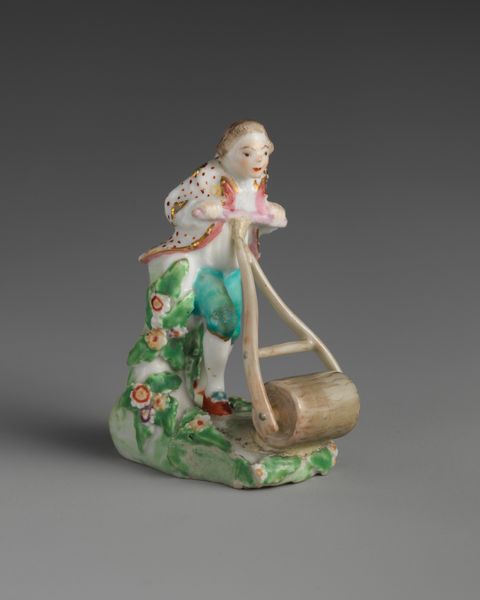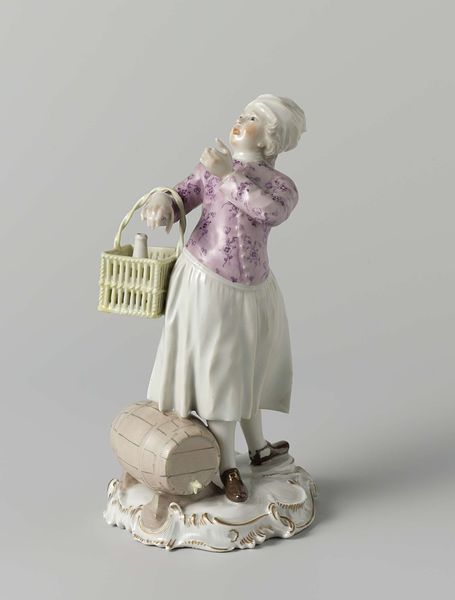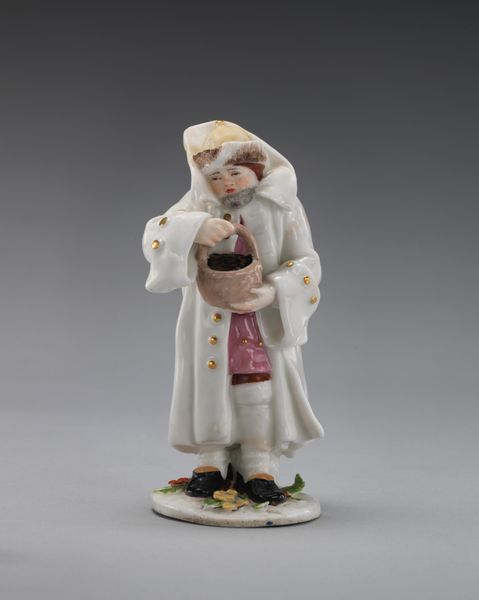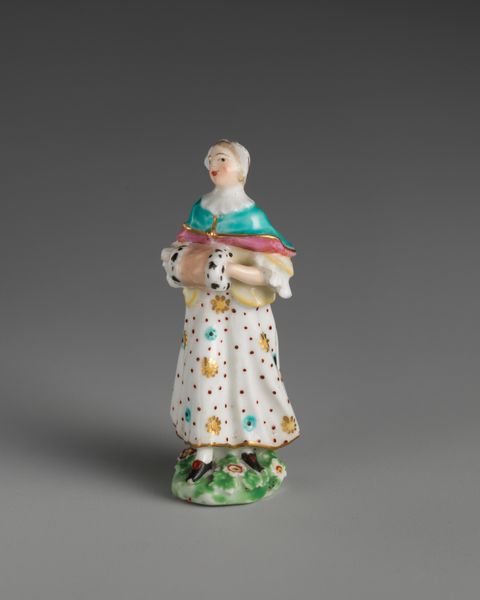
Dimensions: height 12 cm, width 13.1 cm, depth 10 cm
Copyright: Rijks Museum: Open Domain
This small sculpture was crafted in Höchst, Germany, depicting a seated boy with fruit. Ceramic figurines like this one were luxury goods produced in Europe from the 18th century onwards, largely for aristocratic consumers. This boy is depicted in leisurely repose, eating fruit. The very fact that he is not engaged in labour is a marker of his privilege. The figure's fine clothing—the tailored jacket, breeches, stockings, and buckled shoes—further indicates that he is a member of the upper classes. Even the hat beside him, filled with fruit, is a symbol of wealth and leisurely consumption. To better understand this figurine, we might research the economic history of early German porcelain factories, as well as the social history of childhood and class in 18th and 19th century Europe. Through such investigation we can better understand how the creation and consumption of art objects reflect the values of the society in which they are made.
Comments
No comments
Be the first to comment and join the conversation on the ultimate creative platform.
